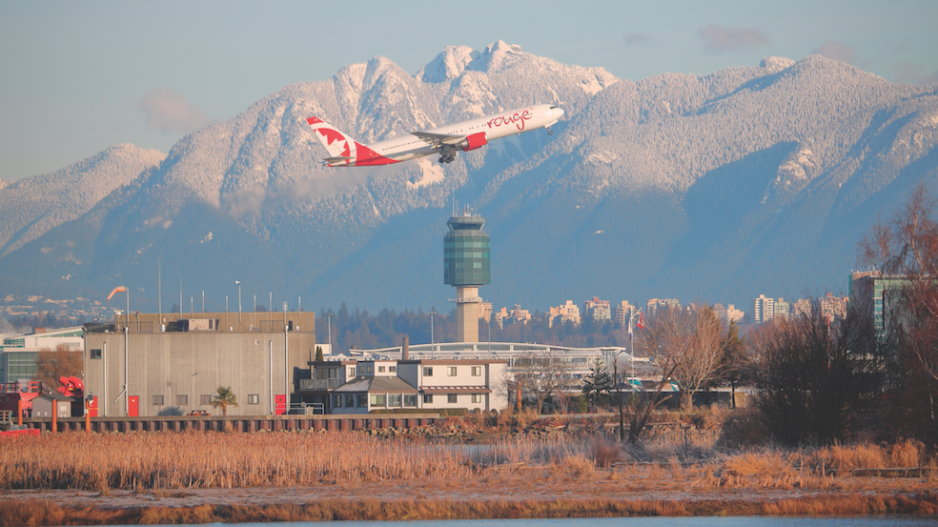Luring new international airlines has helped raise Vancouver International Airport’s (YVR) profile abroad, but its biggest source of passenger growth and the reason for the airport’s growing status as a transportation hub is largely thanks to two large Canadian carriers.
Annual passenger traffic at YVR jumped more than 9.7% in 2016 to almost 22.3 million passengers, with the lion’s share of the nearly two million additional passengers coming from Air Canada (TSX:AC) and WestJet (TSX:WJA).
“Air Canada accounted for 64% of that growth,” said Vancouver Airport Authority CEO Craig Richmond. “Air Canada is a huge reason for YVR’s ongoing success.”
Air Canada has expanded its Vancouver presence in the past year with new intercontinental routes to locations such as Brisbane, Australia; Delhi, India; and Dublin, Ireland. It has also added new routes from Vancouver to U.S. cities, such as Dallas, Boston, San Diego, San Jose and Chicago.
WestJet’s only new intercontinental route out of YVR in the past year is its seasonal flights to London’s Gatwick Airport. Otherwise, new routes out of YVR have been to Orlando, San Diego, Halifax and London, Ontario. It also relaunched flights between YVR and Hamilton, Ontario.
“There’s a bunch [of other routes] that we’ve done extra frequencies to, or filled out the less-than-daily pattern to be daily,” Brian Znotins, WestJet’s vice-president of network planning, alliances and corporate development, told Business in Vancouver.
Znotins said his airline tested the use of wide-body Boeing 767s on the Vancouver-to-Gatwick route and spent time evaluating whether to expand its fleet of wide-body intercontinental aircraft by buying either new or used aircraft.
Then, on May 2, WestJet announced that it has placed a firm order to buy 10 new Boeing Dreamliner 787s.
“With any business that is getting into a new space, you kind of have to build your presence,” Znotins said last week. “You can’t throw it all in at once because that is a recipe for disaster.”
He added that if WestJet buys more planes capable of intercontinental travel – such as the Dreamliners that it is now committed to purchase – Asia is a “natural” next place to launch routes from YVR.
Air Canada CEO Calin Rovinescu, however, has been frustrated with efforts to raise flight frequency to some Asian destinations.
“We are extremely interested in acquiring more commercially viable slots at Beijing, to be able to exploit them and grow markets like Vancouver,” Rovinescu told the Greater Vancouver Board of Trade April 20.
Rovinescu lamented that because Beijing Capital International Airport is at capacity, no new slots are available to Air Canada. Construction is underway on a new, larger airport near Beijing.
“When you’re competing with China, by definition you are competing with very capable Chinese carriers and you’re competing indirectly with the Chinese government because they’re a stakeholder in many of these businesses,” Rovinescu said.
He said his airline will keep trying to launch new transpacific routes, likely starting on a seasonal basis.
For those flights to be viable, they must attract passengers from across North America and not simply from Vancouver, he said.
To that end, Air Canada’s Boeing 787 Dreamliner aircraft that flies between Brisbane and Vancouver heads on to Newark, New Jersey.
“Someone can get on in the U.S. East Coast, get on in Newark, and go all the way to Sydney or Brisbane, connecting in Vancouver,” Rovinescu said. “Basically we’re able to offer service to Australia and to the U.S. East Coast on the same aircraft.”
In addition to WestJet's plans for more intercontinental travel, the airline announced April 20 that it will also launch an ultra-low-cost secondary brand. •




